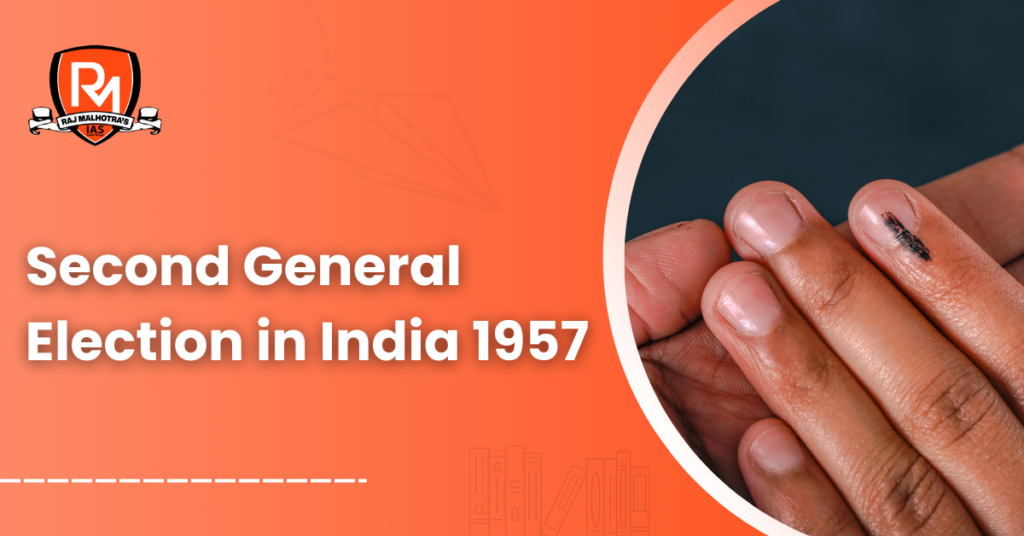Democracy cannot succeed unless those who express their choice are prepared to choose wisely. The real safeguard of democracy, therefore, is education.” –- Franklin D. Roosevelt
An educated and knowledgeable citizen will be able to give his vote to an able candidate. That is where awareness about elections in India and the current situation must be made. Raj IAS Academy strongly believes that an Educated and knowledgeable citizen will lead to a happy society. The Best Institute for IAS Coaching in Chandigarh makes sure that every UPSC aspirant is able to understand the concepts and educate others in a productive way. Today, we will be sharing about the second general Election in India.
India’s Second General Elections: A Landmark in Democratic History
The Second General Elections in India, which happened in 1957, were super important for the country’s Democracy. They brought in some big changes to how elections worked and gave rise to new leaders who would shape Indian politics for a long time. In our blog, we’re going to explore the most important parts of these elections and how they continue to influence Indian democracy today.
- Introduction of the Ballot Paper:
In the Second General Elections, they started using something called a “ballot paper.” It’s like a piece of paper where you mark your choice for the person you want to vote for. This was a big deal because before, voting wasn’t as clear or easy. With the ballot paper, it became simpler for everyone to have a say in who they wanted to represent them. It made the whole voting process fairer and let more people take part in democracy.
- Emergence of New Political Leaders:
The 1957 elections in India were important because they saw the emergence of some big political names. People like Atal Bihari Vajpayee, Lal Bahadur Shastri, Morarji Desai, and R. Venkataraman became key players in Indian politics. They later became top leaders in the country. Their arrival changed how power worked and brought in new ideas and ways of running the country.
- Dominance of the Congress Party:
In 1957, the Congress Party, led by Prime Minister Jawaharlal Nehru, won big in the elections, showing that it was the top dog in India’s politics after independence. But it also started a trend where power within the party stayed within the same family, like when Nehru’s daughter, Indira Gandhi, took over the party leadership. So, basically, it was a big win for the Congress Party, but it also marked the beginning of family-dominated politics in India.
- Strengthening of Democratic Institutions:
The Second General Elections in India went really well. The people who organized it did a great job, making sure everything ran smoothly even though India is a big and diverse country. The change in leadership after the elections happened peacefully, showing how well India’s democracy works.
- Legacy and Lessons Learned:
India’s Second General Elections were super important. They showed how crucial it is to have fair and free elections to keep democracy strong. Also, they brought new leaders into the spotlight and showed how political parties change over time, which proves that Indian democracy is always growing and trying to get better.
The Second General Elections of India were a big deal in the country’s history. They set up a strong system for voting and choosing leaders, and they brought in a bunch of new leaders who changed how things were run. Looking back on these elections reminds us how important it is to keep democracy going strong and make sure we all do our part to make it better for the future.
In simple terms, if you want to pass the Best Institute for IAS Coaching in Chandigarh, Raj IAS Academy is the best place to go. They have great teachers, helpful study materials, and lots of students who have done well in the exams before. At Raj IAS Academy, they’ll help you understand everything you need to know for the exam and support you along the way. Choosing Raj IAS Academy means you’re on the right path to achieving your dream of working for the country.






